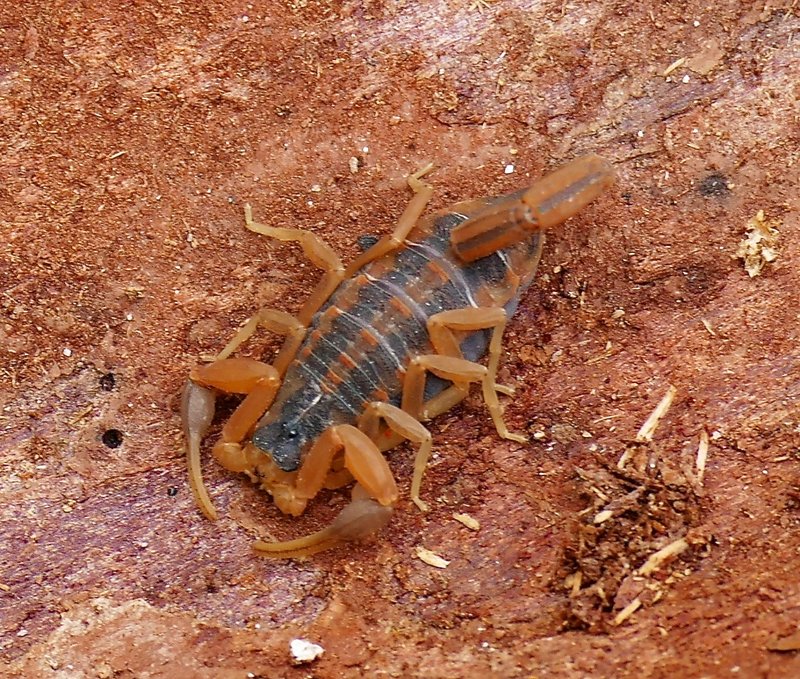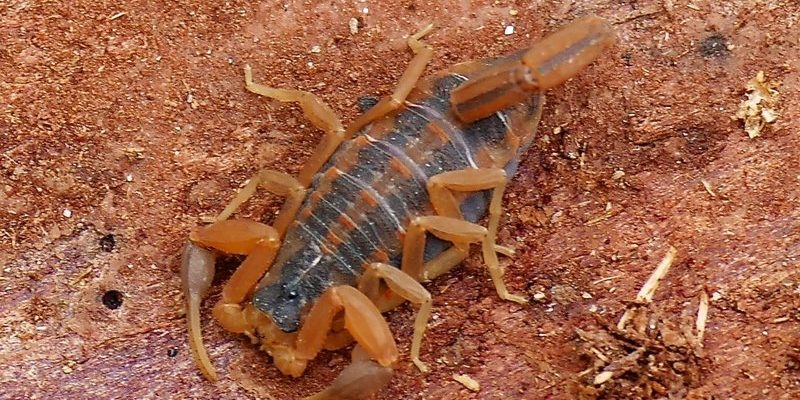
These little creatures are often found in wooded areas and deserts, hiding beneath bark or rocks. With their characteristic yellowish color and distinct stripes, they may look intimidating, but they are more than just their pincers and stingers. Let’s dive into the world of the striped bark scorpion and discover why they are not only vital to their habitats but also surprisingly interesting.
Understanding the Striped Bark Scorpion
The striped bark scorpion is a member of the Scorpionidae family, which is well-known for its variety of species. They typically measure about two to three inches in length, making them relatively small compared to other scorpions. You might be wondering why they have that unique striped appearance. It helps them blend into their surroundings, making it easier for them to hunt and avoid predators.
These scorpions are primarily nocturnal, which means they come alive at night. During the day, they tend to hide under rocks, logs, or even within the bark of trees. Their camouflage not only aids in hunting but also protects them from larger predators like birds or mammals. The striped bark scorpion is mostly found in areas with shrubs, grasslands, and forests across the southern United States and parts of Mexico.
The Role of Striped Bark Scorpions in the Food Chain
Every organism has its place in the food chain, and the striped bark scorpion is no exception. They serve as both predators and prey, making them an essential part of their ecosystem. As predators, they primarily feed on insects such as crickets, roaches, and even other small arthropods. With their powerful pincers, they capture their prey and deliver a quick sting to subdue them.
You might think, “What difference does one small scorpion make?” Well, by controlling the population of insects, striped bark scorpions help maintain a healthy balance in their environment. If their prey grows too abundant, it can lead to disruptions, like crop damage or the spread of disease. So, the striped bark scorpion isn’t just a small player; they’re more like the bouncers at a club, keeping everything in check.
On the flip side, they’re also food for larger animals. Birds, reptiles, and even some mammals rely on them as a source of nutrition. By serving as prey, striped bark scorpions contribute to the diets of various predators, highlighting their importance in sustaining biodiversity.
The Importance of Scorpions in Pest Control
In the grand scheme of nature, striped bark scorpions play a significant role in pest control. Many farmers and gardeners may not realize that having these scorpions around can be beneficial. Thanks to their diet of insects, they naturally reduce the number of pests that can damage crops or gardens.
Consider this: instead of using chemical pesticides that can harm the environment, introducing or maintaining a healthy population of striped bark scorpions can provide a natural solution. They help to keep insect populations in check without the adverse effects of chemicals. It’s like having a natural defense system for your garden!
Additionally, their presence can indicate a balanced ecosystem. If you see these scorpions thriving, it often means that other species in the food chain are also doing well. They are a kind of litmus test for the health of their environment.
The Role of Striped Bark Scorpions in Biodiversity
Biodiversity is vital for ecosystem resilience, and striped bark scorpions contribute to that in various ways. They provide food for many animals, as we discussed, and when they die, their bodies decompose, returning important nutrients to the soil. This process supports plant growth and contributes to the overall health of their habitat.
You might also be surprised to learn that scorpions are important in the study of ecological interactions. Scientists often observe them to understand predator-prey dynamics, species interactions, and habitat health. The knowledge gained from studying these creatures can help conservation efforts, as we learn more about what it takes to maintain balanced ecosystems.
In a broader sense, the striped bark scorpion can also serve as an indicator species. Their health and population trends can signal changes in environmental conditions. Monitoring them can alert conservationists to potential problems in the ecosystem before they become serious.
Human Interactions: Myths and Misunderstandings
Humans have a complicated relationship with striped bark scorpions. Often viewed with fear due to their sting, many people incorrectly assume they’re always dangerous. While it’s true that their sting can be painful, it’s rarely life-threatening to humans. For most, it feels similar to a bee sting.
Despite their intimidating reputation, scorpions play a vital role in ecosystems and rarely pose a threat unless provoked. It’s helpful to understand that they’d rather avoid us than confront us. You might be surprised to know that scorpions are often more afraid of humans than we are of them!
Education is key to changing perceptions about these remarkable creatures. By informing communities about their role, we can encourage coexistence rather than fear. For instance, teaching kids about their ecological importance can foster a sense of respect and appreciation for nature.
Protecting Their Habitat: Why It Matters
With climate change and urban development altering landscapes, the habitats of striped bark scorpions are at risk. Protecting their environments is essential for maintaining the balance in ecosystems where they thrive.
Supporting conservation efforts, like preserving natural areas and reducing pesticide use, can help these scorpions and other wildlife flourish. It’s like building a buffer that allows both nature and human activity to coexist harmoniously.
Engaging with local wildlife organizations and participating in habitat restoration projects can also make a difference. Even small actions, like planting native species in your garden, can help provide a suitable environment for these important creatures.
The striped bark scorpion might be small, but its role in nature is anything but insignificant. From controlling pest populations to supporting biodiversity, these fascinating creatures contribute to the health of their ecosystems in diverse ways. By understanding and respecting their place in the world, we can promote a healthier environment for all living beings. So, the next time you hear about scorpions, remember—they’re not just stingers; they’re vital players in the intricate web of life.

